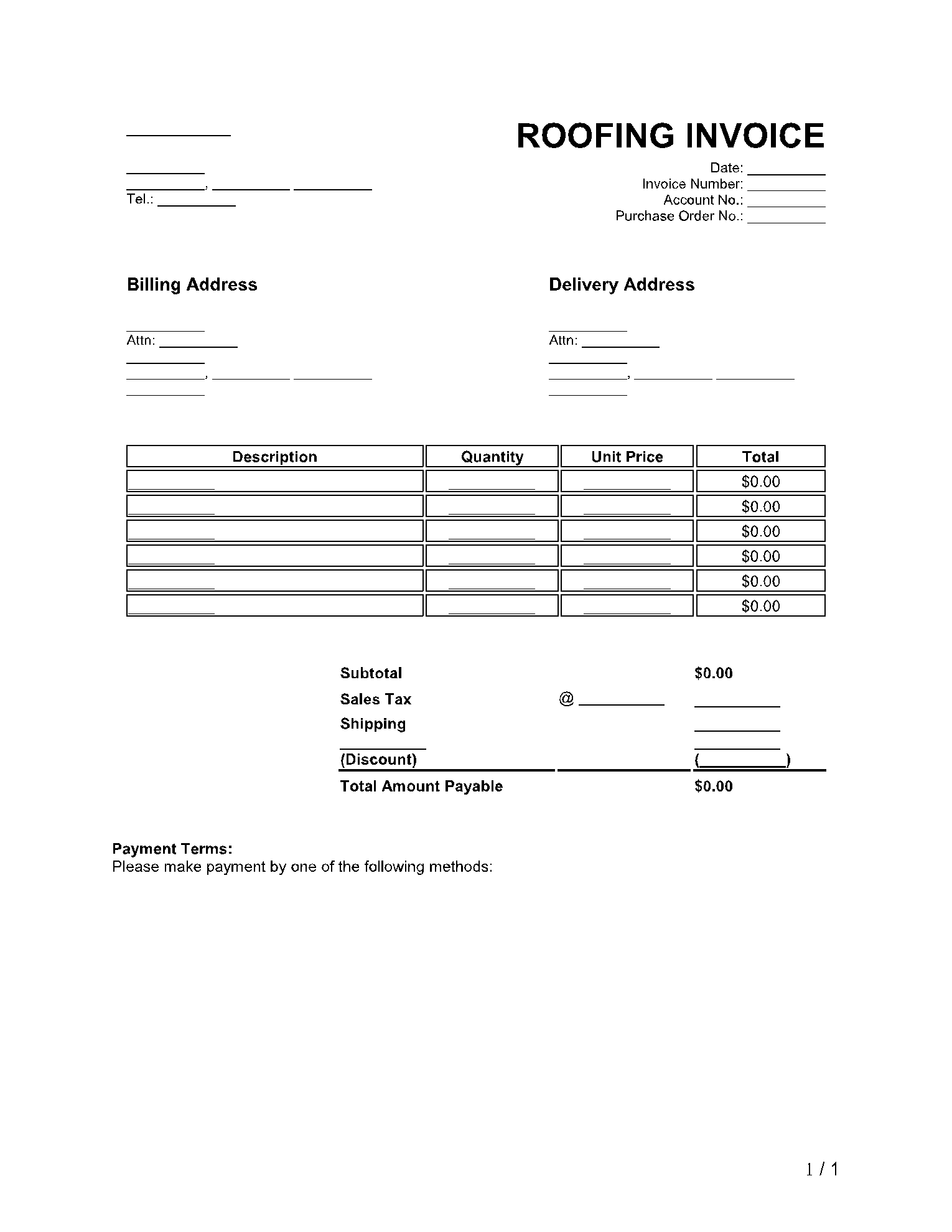When you erect a building, the roofing part is handled by a separate team than the one that did the rest of the construction.
It’s the same with repairing a roof. The client needs to find a specialized team to make sure the result is excellent, as building and repairing roofs requires special skills.
When the team is done with the job, they need to provide the client with a document that lists all the services they rendered, all the materials they used, the human resources that were necessary to justify the final cost of the process. That’s what the roofing invoice does.
What Is a Roofing Invoice?
When the project starts, the contractor makes the best recommendations regarding the materials to be used, so that the result can be top-quality. But in the end, they need to justify every expense and show the client what they are paying for, line by line.
The roofing invoice is the justification of the total cost, as well as proof that the initial recommendations were respected and put into practice. It is an easy and professional way to bill the client, in a way that is beneficial to both parties.
What Are Some Common Roofing Construction Projects?
From building a new roof from scratch to repairing an old one, there are many types of construction projects. Each has specific special requirements, and the client needs to be informed on every step, which is why roofing estimates templates are quite handy.
These are the most common roofing constructions projects:
- Removing an existing roof - depending on the project and the plans the client has, the constructor may have to remove the entire old roof or just a portion of it. To inform the client on the costs they should expect from such a project most contractors use roofing estimate templates.
- To replace a roof is a complex project, and to make sure every step is made clear to the customer, with the costs it involves, contractors usually use blank invoice templates or roofing invoices.
- Painting the roof is a less complicated project, but there are still materials and human resources involved; a roofing invoice is where all these are listed so the client can know what they are paying for.
No matter what type of work you need to be done on your roof, you should expect a roofing receipt that details all the services, materials, and costs.
What to Include in a Roofing Invoice?
All serious contractors use roofing estimate templates to keep their clients informed. At the same time, keeping that information organized helps them keep track of how the project is progressing and how well they are meeting their goals.
Regardless of the type of roofing invoice they use, these are the elements that must be included:
- Identifying information of the contractor/installer – company name, address, phone number.
- Identifying information of the client: name, address, phone number.
- Invoice number, date, and the due date when the roofing invoice must be paid.
- A detailed description of the services provided, including the price of materials and the quantity, the labor costs.
- Information on taxes and miscellaneous expenses.
- The total amount that must be paid.
- Payment terms and conditions, including penalties for late payments.
- Method of payment, as chosen by the client.
Conclusion
Roofing projects are usually more complex than the client expects; there are many materials, many persons involved, and challenges that may appear at any point.
That’s why it’s crucial to include every one of these aspects in a comprising roofing invoice, to make everything clear and avoid misunderstandings. If you need to create such a document, try the template from CocoSign.

